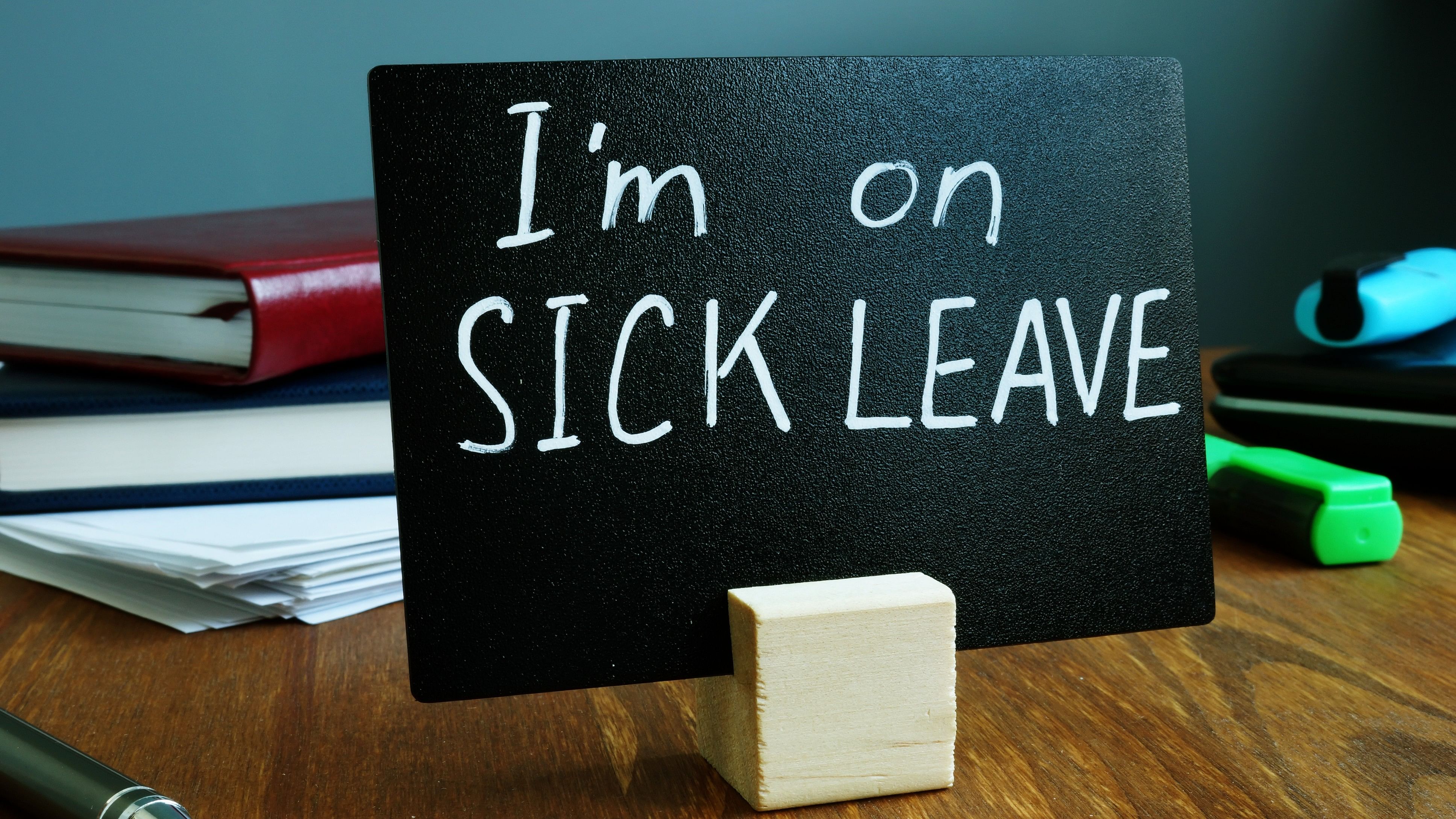
A representative image of a sick leave sign.
Credit: iStock
By Sarah Green Carmichael
It’s become the conventional wisdom: Sick days haven’t been the same since the Covid pandemic “raised the bar” for taking time off. Mass layoffs and strict return-to-office policies have left ailing employees feeling “sick shamed” by attendance-taking bosses. Have a sniffle? Tough it out — or at least work from home.
That might be how the current moment feels in some offices, but the data suggest most are more humane. In fact, more employees are taking sick days than before the Covid pandemic — and most managers support them. That’s ought to be reassuring news for anyone who gets sick. Which is, after all, all of us.
Nonetheless, there is still room to improve, particularly for low-wage and part-time workers. And the still-evolving world of hybrid work creates new questions — and fresh anxieties.
First, some numbers. Payroll company Gusto found that at professional service firms, 30 per cent of employees took at least one sick day in 2023, a 42 per cent increase from 2019. The average absence got longer by about 15 per cent. A Statista survey showed the same trend: The number of employees taking zero sick days fell to 23 per cent in 2023 from a peak of 33 per cent in 2021.
Some have noticed this trend and ascribed it to deep shifts in employees’ psyches — a more cavalier attitude about work, perhaps, or greater respect for health. But I think the real reasons are more straightforward.
First, more illness. Covid introduced a serious new respiratory virus into circulation, and thanks to its ability to mutate, reinfections are common even among the vaccinated. Rates of illness for flu and RSV are also higher post-pandemic. More people are taking sick days because, well, more people are getting sick.
Second, more workers across the income spectrum now have paid sick leave, although access is still unequal. It doesn’t surprise me that as access to sick leave has expanded, more people are using it.
Still, we can do better. The US needs a national paid sick leave policy to provide a baseline benefit everyone can count on. The standard in many other wealthy nations is five days a year for a short-term illness. Part-time workers, who are roughly half as likely to have paid sick leave, should also be covered, because noroviruses don’t consult the shift calendar. Workers should also be able to use sick leave to care for sick children — something more companies are allowing post-Covid anyway.
There are economic benefits to paid sick leave. A working paper by researchers from the University of Essex, Drexel University and the Vrije Universiteit Amsterdam looked at what happened in US states that mandated paid sick leave between 2008 and 2019. They found the introduction of paid sick days led to a 1.6 per cent rise in firm profitability and a 6 per cent increase in labor productivity.
A different analysis by University of North Carolina researchers found that paid sick leave increases employment by 1.5 per cent, in part by reducing turnover. A federal sick leave policy would build on such state-level gains.
A national policy should also help reverse the growing trend of “undesignated PTO,” where all paid time off — illness, vacation and so on — comes from a common pot. Employers like the simplicity of such plans and often portray them to employees as family-friendly and flexible. But they make it more likely that workers show up sick. Ironically, it’s the health care sector where this health-devaluing practice is most common.
But even better policies would only go so far, particularly in organizations with always-on cultures, where unspoken norms equate rest with laziness.
Employers should reassure nervous workers that sick leave exists to be used. In a January survey by Resume Builder, most bosses agreed that it’s reasonable “always” or “most of the time” to take sick days for physical and mental health — and a huge share said it was even OK to use sick leave for unspecified family emergencies. Wouldn’t it be nice if more workers knew that?
And although a small share of bosses are Ebenezer Scrooge types suspicious of any absences, about three-quarters give their employees the benefit of the doubt.
But one area where workers and bosses are genuinely confused is what role, if any, remote work plays when an employee is sick. HR leaders should clarify how illness affects return-to-office and remote work policies. Post-pandemic, companies are putting more attention on badge swipes, which encourages workers to show up coughing — and spread their germs. Leaders need to emphasize that sick days (and days spent working remotely due to illness) won’t impact workers’ attendance scores.
Conscientious workers also need to hear that although it might be OK to work remotely through a mild illness, they won’t be letting the team down if they need actual rest. Virtual presenteeism can allow illnesses to worsen. One remote worker I know came down with a terrible cough but took just a single sick day over the course of three weeks of illness. The fourth week, her bad cold turned into pneumonia.
Which just goes to show it’s not only managers and HR departments that need to change their attitudes about sick days. More employees also need to give themselves permission to rest when needed. They shouldn’t feel guilty about it — after all, more and more of their colleagues are already doing so.